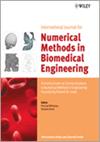Variational approach to the free-discontinuity problem of inverse crack identification
引用次数: 1
Abstract
This work presents a computational strategy for identification of planar defects (cracks) in homogenous isotropic linear elastic solids. The underlying strategy is a regularizing variational approach based on the diffuse interface model proposed by Ambrosio and Tortorelli. With the help of this model, the sharp interface problem of crack identification is split into two coupled elliptic boundary value problems solved using the finite element method. Numerical examples illustrate the application of the proposed approach for effective reconstruction of the position and the shape of a single crack using only the information collected on the surface of the analyzed body.逆裂纹识别自由不连续问题的变分方法
本文提出了一种识别均匀各向同性线弹性固体中平面缺陷(裂纹)的计算策略。其基本策略是基于Ambrosio和Tortorelli提出的扩散界面模型的正则化变分方法。利用该模型,将裂纹识别中的尖锐界面问题分解为两个耦合椭圆边值问题,用有限元法求解。数值算例说明了该方法的应用,仅利用在被分析体表面收集的信息就能有效地重建单个裂纹的位置和形状。
本文章由计算机程序翻译,如有差异,请以英文原文为准。
求助全文
约1分钟内获得全文
求助全文

 求助内容:
求助内容: 应助结果提醒方式:
应助结果提醒方式:


